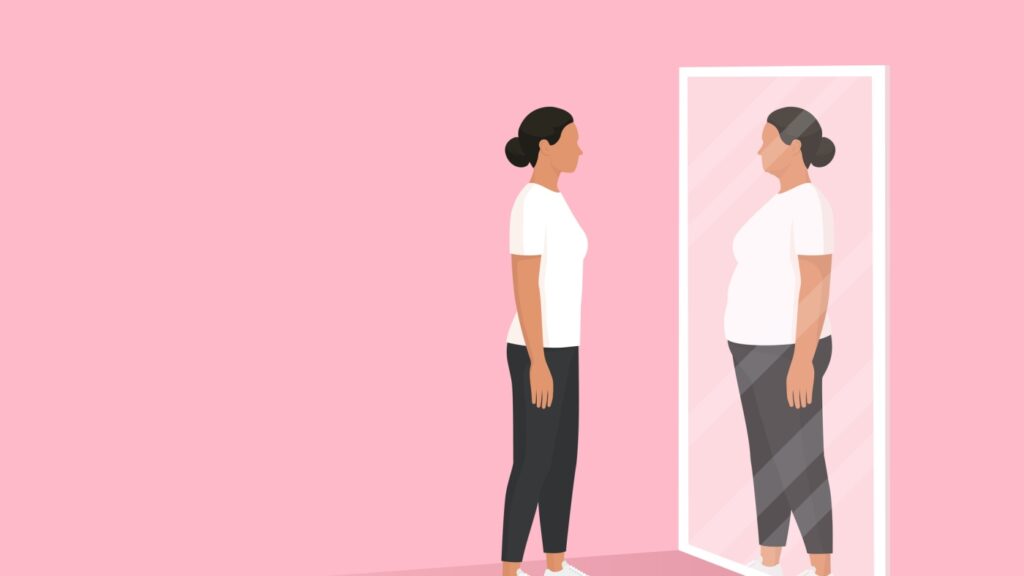
Woman looking at the mirror and seeing herself as overweight: eating disorders and anorexia concept
BEIJING – TikTok has taken a decisive step by banning the hashtag #SkinnyTok following warnings from European regulators. The hashtag was criticized for promoting unrealistic body images and extreme weight loss, showcasing content of emaciated-looking young women sharing rapid weight loss tips.
Immediate Impact
Despite the ban, the challenge of eliminating harmful content remains. Social media platforms, including TikTok, continue to host a plethora of content that encourages unhealthy eating habits and extreme thinness.
Research indicates that exposure to such content is linked to a higher risk of disordered eating, especially among young women and girls.
Key Details Emerge
Brooke Erin Duffy, a social media and culture expert at Cornell University, explains the complexity of regulating content that falls into “gray zones.” She notes that creators often find ways to circumvent restrictions.
“As soon as there is an attempt for platforms to regulate or thwart a hashtag, anyone using the platform is gonna develop a workaround,” Duffy states.
A trending meme, “What I eat in a day,” exemplifies this issue. Posts can vary from showcasing balanced diets to dangerous calorie deficits.
Body-Positive Counterprogramming
In response, some creators are producing content that counters negative body image narratives. Kate Glavan, an athlete and creator with nearly 150,000 followers, shares her personal battle with an eating disorder and warns against content that glamorizes undernourishment.
“A lot of creators are explicitly promoting anorexia to their audience,” Glavan emphasizes. “It’s dangerous. It’s misinformed.”
Industry Response
TikTok has declined interviews but stated they regularly review safety measures and have blocked searches for #SkinnyTok. Searches are redirected to the National Alliance for Eating Disorders.
Among other strategies, TikTok restricts videos for teen accounts and partners with advocacy groups to promote healthy content.
By the Numbers
Research highlights the stark contrast in audience engagement between negative and positive body image content. Amanda Raffoul from the University of Toronto notes that negative images often have a more lasting impact.
“Negative images that are unrealistic or show really thin people tend to have a more lasting impact than body-positive content,” Raffoul observes.
What Comes Next
The battle against harmful content is ongoing. Megan Jayne Crabbe, an author and body-positive advocate, expresses concern over the resurgence of extreme thinness narratives, exacerbated by the rise of GLP-1 drugs for weight loss.
“The beauty standard has swung back towards extreme slimness,” Crabbe remarks, pointing out the need for deeper societal reflection.
Background Context
Nyome Nicholas-Williams, a Black plus-size model, highlights the co-opting of the body positivity movement and the challenges of advocating for body neutrality. In 2020, she confronted Instagram over content censorship, leading to policy changes.
“Speaking up and being brave,” Nicholas-Williams states, “that’s what it takes.”
Expert Analysis
Raffoul underscores the role of profit in perpetuating harmful content. She stresses the need for legislative action to enforce meaningful protections against dangerous content on social media.
“Every second, every minute that we spend on these platforms is being monetized,” Raffoul explains, noting the historical context of eating disorders.
Until legislative changes occur, Raffoul advises avoiding harmful content as the best strategy for protection.


